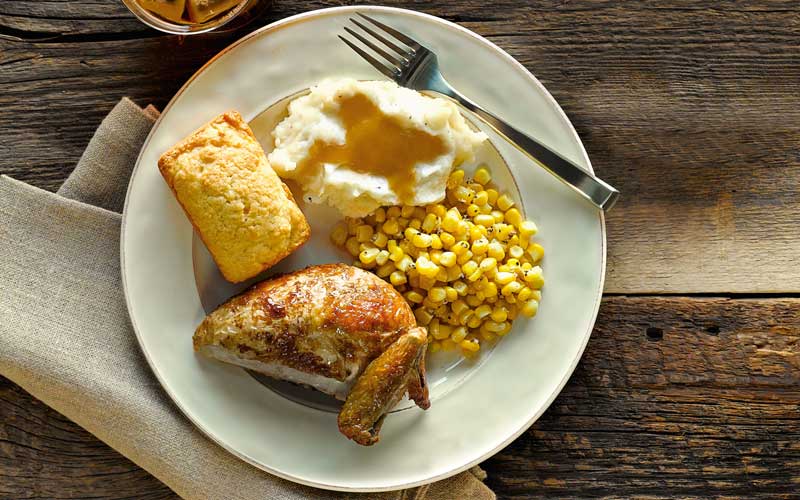When Boston Market became one of the hot brands in the ‘90s, its laser focus on convenience was novel in the explosive era of casual dining giants. Now, the company is evolving at breakneck pace along with everyone else as the third-party delivery revolution reshapes the restaurant industry.
CEO Frances Allen, who joined the company in May of 2018, said in a lot of ways, the company was ahead of its time back then.
“In the ‘90s, we had a Boston Market Express line where you called ahead and you’d go to a special line and pick it up and serve it hot at home,” said Allen. “This brand was 30 years ahead of its time, and everybody is scrambling to catch up now, (but) we were the original home-meal replacement. So what we were really trying to do is stay up to date, keep that purpose in mind that our job is to be ‘mom’s’ ally and make his or her life easier and better.”
When delivery started getting traction, they explored the concept along with everyone else, but Allen said even in a short timeframe, the industry has changed radically.
“It’s changed enormously. I was just talking to an old colleague the other day about the fact that in 2015 [when she was in Jack in the Box leadership], we were just starting to look at delivery and tentatively testing one of the delivery partners, now if you’re not in the delivery game, your business is not growing, so it’s really taken off,” said Allen.
She added that it’s all about evolving to consumer demands. And lately, they’ve been demanding an even more efficient way to order and either pick up their food or get it delivered on their own terms. That means they can order on any of their favorite third-party networks, on the company site and get it for pick-up, fulfilled by Boston Market delivery drivers or a third-party driver.
“It’s entirely up to them, we are completely agnostic, in the end it’s about our guests’ convenience not ours,” said Allen. “You have to meet those consumer expectations and evolve and adapt. We’ve got to actively drive that evolution.”
She said the commission rates from the delivery networks are her problem, not the consumers’. Recently the company launched a loyalty program to entice people to order direct, but she prefers that invitation to any sort of penalty or additional fee.
As far as operations, given the very high level of take-out the company already had, it wasn’t a major undertaking to add third-party delivery, but Allen said they did a few things to make it even easier since they leaned into delivery completely in August of last year.
These days, a simple screen tells consumers and drivers where their order is in the process and which bag to grab. That’s an obvious perk for the consumers, but especially for delivery drivers who don’t want to stand in line, don’t want to flag someone down at the pick-up counter and are eager to get to their next delivery.
“The key, I think, is making sure the order is right, making sure it’s ready to pick up and they don’t have to wait. As we had top-to-top meetings with our third-party partners, these are the things they said were important to drivers, so we put them front and center,” said Allen. “Our satisfaction scores for delivery drivers are incredibly high, because the food travels well and we get the order right.”
That’s resulted in a big win. Anyone who is tuned into driver forums has seen more rants than raves. Especially among big chains, drivers report slow orders, lack of communication and organization around delivery. It’s a matter of focus; at about 1 percent of foodservice, delivery isn’t moving traffic enough for a lot of brands to make big changes. Drivers notice.
“I think our drivers are happy to come,” said Allen. “They’re a really important piece of the equation, like our employees (and) it’s important that we make them happy too. Then they’re more likely to accept our order.”


